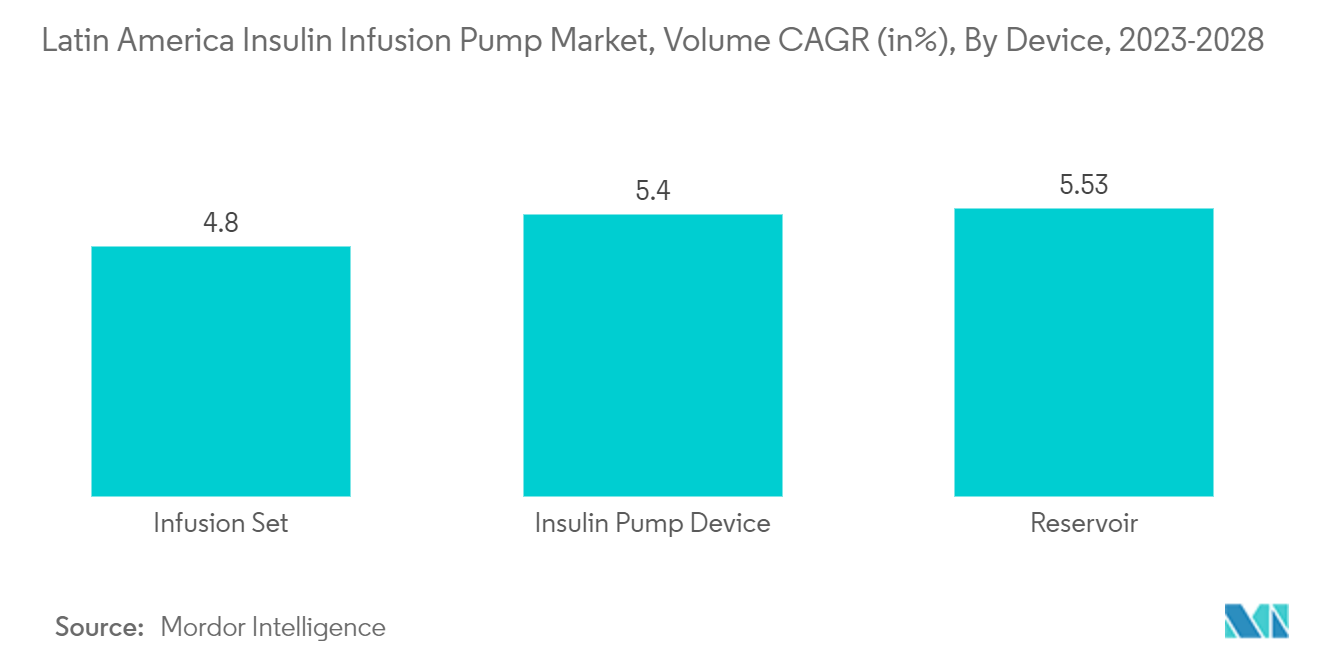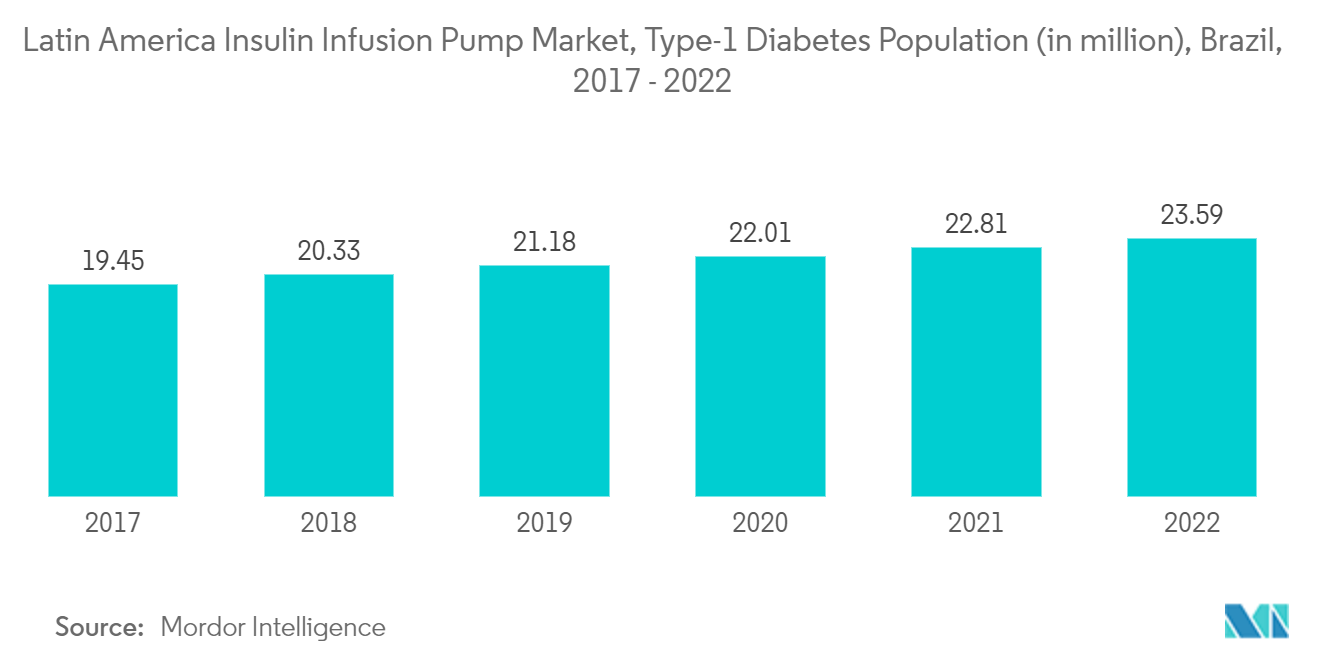Market Trends of Latin America Insulin Infusion Pump Industry
Insulin Pump Monitors Hold Highest Market Share in Latin America Insulin Infusion Pump Market in the current year
In Latin America, a variety of insulin pumps are available. Traditional insulin pumps have an insulin reservoir (or container) and pumping mechanism attached to the body with tubing and an infusion set. The other insulin patch pumps are worn directly on the body and have a reservoir, pumping mechanism, and infusion set inside a small case. Patch pumps are controlled wirelessly by a separate device that allows the programming of insulin delivery for meals from the patch. Most insurance companies in Latin America cover insulin pump therapy with variable out-of-pocket expenses. Diabetes is one of the major health challenges of the twenty-first century, according to the Pan American Health Organization (PAHO). According to the organization's data, the number of people suffering from this condition will reach 642 million by 2040. One advantage of this solution is that it allows patients to communicate with a remote healthcare professional, avoiding the need to visit a healthcare facility and lowering the risk of contracting COVID-19 in this high-risk group. Diabetes affects approximately 41 million people in Latin America and 400 million worldwide. This figure is expected to rise over time, reaching 68 million diabetics in the region by 2040.
The overall prevalence of insulin pump use increased from 30% in 2001-2005 to 58.3% in 2016-2019; there was no change in rates by race, income, or education over time. The technology combines glucose monitoring using a CGM with advanced algorithms in the insulin pump to predict low glucose and suspend insulin delivery. The technological innovation in the insulin pump device market is likely to drive the market during the forecast period.

Brazil Holds Highest Market Share in Latin America Insulin Infusion Pump Market in the current year
The MOH governs the Brazilian health system, which each state and local health secretariat manages. Furthermore, in many towns where the public sector cannot meet people's needs, partnerships with private organizations have been established to increase access to PHC. Several programs in the Brazilian health system cover medicines, including a 20% increase in access to essential medicines. Brazil offers a comprehensive free immunization program. Over the last two decades, Brazil has faced many lawsuits demanding that high-priced drugs used to treat diabetes and other rare or low-prevalence diseases be covered. Between 2017 and 2045, the diabetic population in Brazil is expected to increase by 74%. Brazil is the world's sixth most populous country, with the fourth highest diabetes prevalence. To reduce the country's death rate, the Brazilian government is encouraging diabetes patients to take medication. The Brazilian Ministry of Health collaborated with private pharmacies in Brazil to provide free insulin (regular human insulin and isophane insulin or NPH) and three oral diabetes medications (5 mg glibenclamide and 500 and 850 mg metformin). According to a Brazilian survey, 38.4% of people with diabetes are delaying medical appointments or laboratory tests, and 5.8% have stopped reclaiming their diabetes self-care medicines and medical supplies. The potential consequences of these fears on diabetic populations can be disastrous, increasing the already high incidence of chronic complications and exacerbating their risk of SARS-CoV-2 infection. As a result, among the immediate safeguards, the government began telehealth, teleconsultation, and other online strategies to address the challenges of healthcare professional shortages while keeping people with diabetes safe and assisted. Brazil is expected to dominate the market due to the easy availability of insulin delivery devices, high consumer awareness, and reimbursement policies.
Therefore, owing to the factors above, the growth of the studied market is anticipated in the Latin America Region.


